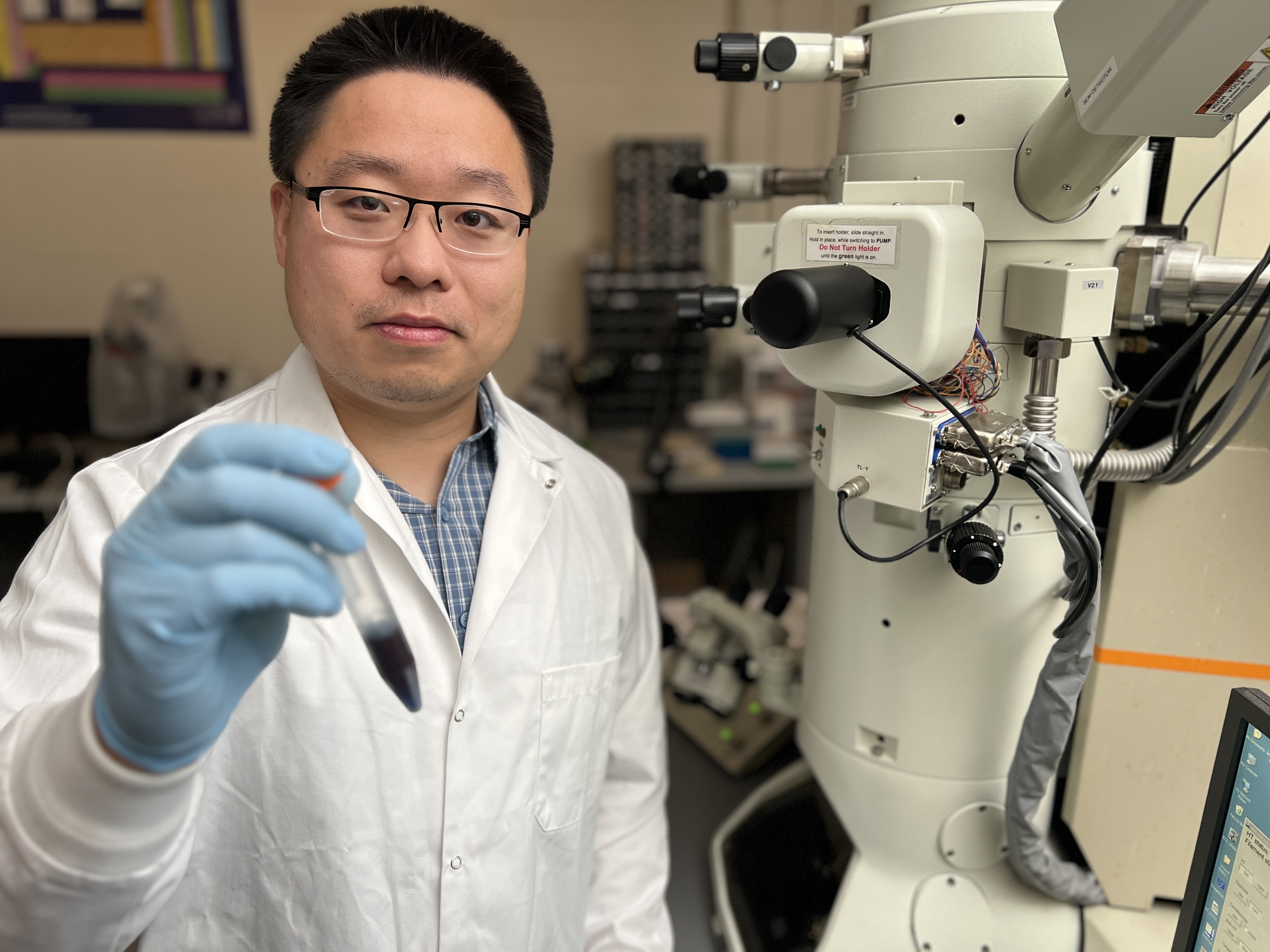Shan Zhou, Ph.D.,
an assistant professor in the Department of
Nanoscience and Biomedical Engineering at South Dakota Mines, made a breakthrough in the
creation of nanoscale structures that could change medicine, computing, clean
energy and more.
The nanoparticle sheets that Zhou creates are self-assembled
nanoscale pyramids with a unique
property, chirality; this means the sheets and their mirror images cannot be
superimposed. Chiral structures are
everywhere in nature, for example, the way the palms of your hands mirror each
other as opposites. This same chirality is repeated across many scales, from
the structure of DNA to the layout of galaxies. But, until now, it’s been
difficult to replicate chirality in the microscopic structure of a synthetic
material.
Zhou is the lead author on research recently
published in the journal Nature with Qian Chen’s group at the University of Illinois
and Nicolas Kotov’s group at the University
of Michigan. He says synthesizing chiral nanoparticle sheets, or lattices, has been
a holy grail for researchers because of the huge range of applications they may
provide. This work could lead to new types of machine vision, enable
manufacturing of new medicines and chemicals or it might help create
self-healing materials like those envisioned in science fiction movies, such as
“Terminator II."
Zhou and others on the research team used nano-sized
gold pyramids with a triangle base, known as tetrahedrons, arranged in lattices
where the tetrahedrons are packed together in low density. He found that, with
the right chemical combination, the tetrahedrons would twist inside the sheets
to form pinwheel shapes. This short
video in the Nature article shows the transformation. Because of their unique
shape, the sheets cannot be superimposed on their mirror images. The research also
found that the amount of twisting of individual tetrahedrons could be varied depending
on the chemicals added to the lattice. This means the materials can be tuned to
exhibit different properties.
 “What’s interesting is this pinwheel structure was
never before predicted in models or theory,” says Zhou, “Once we did further
testing, we were very surprised to find it showed these unique chiral
properties.” Zhou credits a Multidisciplinary University Research Initiative grant
through the Office of Naval Research for support along with collaborating
scientists at Argonne National Laboratory and the University of Michigan for
assisting in the testing of this material.
“What’s interesting is this pinwheel structure was
never before predicted in models or theory,” says Zhou, “Once we did further
testing, we were very surprised to find it showed these unique chiral
properties.” Zhou credits a Multidisciplinary University Research Initiative grant
through the Office of Naval Research for support along with collaborating
scientists at Argonne National Laboratory and the University of Michigan for
assisting in the testing of this material.
Zhou came to Mines in 2022 after completing his postdoctoral
research at the University of Illinois, and he is continuing to seek new
discoveries in this area of research. “The next thing that we are trying to do
with nanoparticle self-assembly is to obtain materials with properties similar
to those portrayed in the ‘Terminator II’ movie, where self-healing
materials come back together after they are deformed,” says Zhou. “Because of
the unique properties of this synthetic material, the geometric features that
make up the pinwheel lattice do not need energy input to reconfigure themselves
after a disturbance.”
Zhou founded the Materials-Interfaces Imaging and Design Laboratory at South
Dakota Mines to further explore the unique properties of these new materials. His
lab aims to create detailed high-resolution 3D imaging capabilities for
nanoparticles and molecules, study nano scale interactions and responses at the
surfaces of synthetic and biologic materials and offer future engineering
strategies for developing new natural and artificial materials systems. The
work could help solve challenges in clean energy and biomedicine. Zhou’s lab
offers unique expertise in nanoparticle synthesis, self-assembly, electron
microscopy and atomic force microscopy. “We are actively looking for undergraduate
and graduate students and welcome future collaborations,” he says.
Read more about this work in this press release
from the University of Illinois.